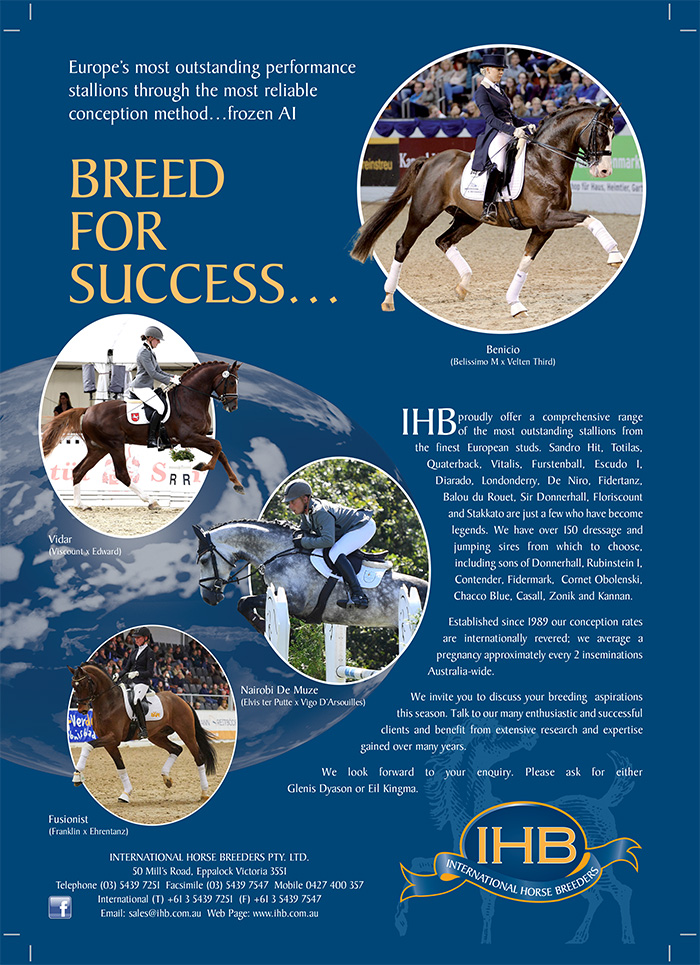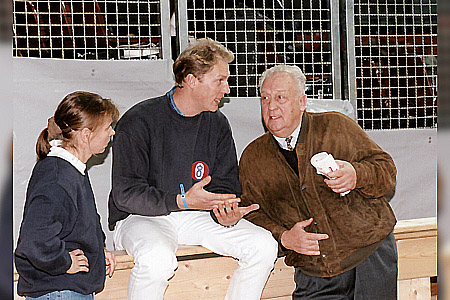
Günter Pape, with his son, Ingo, and daughter-in-law, Susanne
(Photo – Schreiner)
An interview with Christopher Hector
Ingo Pape comes from one of Germany’s most famous horse-breeding families.
His father, Günter Pape established one of the great mare lines when he purchased the three-year-old, Franka (Frustra II / Domspatz). Bred to Pik Koenig, Franka produced Pik I and Pik bube II, and their full sisters, Pik Dame (USA), Paola (dam of Donnerklang A and Bergamon), Priola (dam of Regazzo and Donnerschlag) and Polljana, dam of Raphinus. Look closely at the breeding of some of Europe’s top dressage horses, and you will find that blood still runs in their veins.
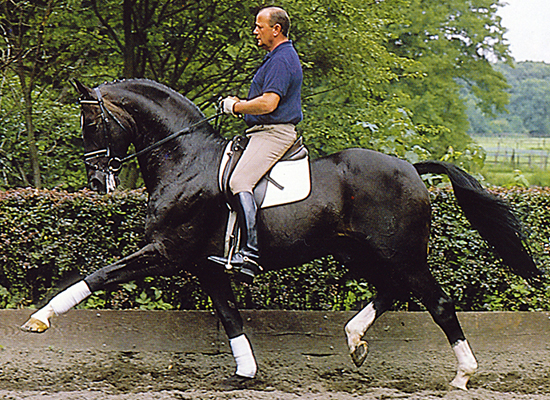
Pik Bube I with the late, great Herbert Reihbein
– both Ingo and Susan were students of Herbert
The Pape family stud at Hemmoor, has always been at the cutting edge, and the current roster of stallions reflects the state of the art in dressage breeding today. The blood of all Germany’s leading dressage stallions is to be found in the current roster of stallions, Donnerhall, De Niro, Florestan, Sandro Hit, but in a sign of the times, there is also a significant proportion of Dutch blood, Jazz, Ampère and the current flavor of the month, Vivaldi.
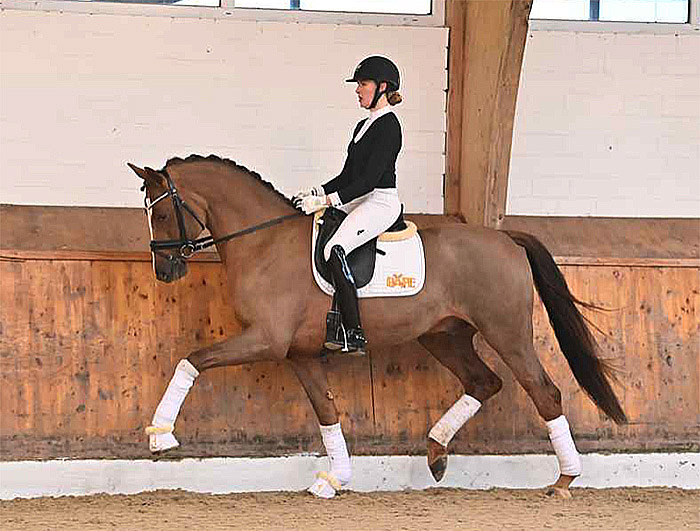
Standing at Hengststation Pape – Venido by Veneziano (Vivaldi Donnerhall) out of a Sir Donnerhall I / Don Davidoff mare.
I asked Ingo, Were you surprised at the rise of Dutch blood in dressage breeding?
“Surprised why?”
Well at one stage Germany seemed the dominant force in dressage breeding… The Dutch were breeding their dressage horses, basically using German stallions, sometimes German mares, but no one was using Dutch stallions in Germany – suddenly everyone is breeding to Dutch stallions...
“That was the case ten years ago, but it has changed dramatically. It’s not just Dutch, the whole breeding business has become much more international, it’s the same with Danish blood. It started with Artificial Insemination. It was mixed up in the country like Germany with sixteen different breeding associations, then it got more mixed up, throughout Europe. It’s just a reflection of artificial insemination, and the very good performance of the Dutch in breeding and sport.”
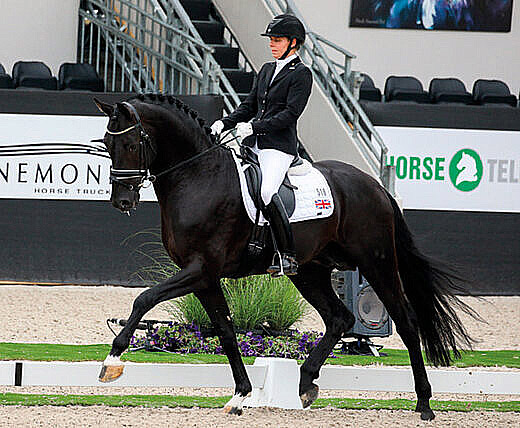
More Dutch blood at Hemmoor – V-Plus, by Vivaldi
out of a Fürst Romancier / Sandro Hit mare
“It’s not a surprise at all, because they had a very strict idea that they followed for the last twenty years. I have the biggest respect for the Dutch stallion keepers, and how successful they are in having their breeding stallions on their number one dressage team. That’s not easy, but it should be a goal. That’s part of the success, these stallions are so much in the limelight, in the hot spot – then they get a lot of mares.”
“That’s very influential, and a little different to the German dressage horse breeding, where the most important thing is always the foal market. And the stallion with the most mares is often a very young stallion, straight from the Körung, the Licensing, so the influence of the young stallions is bigger in Germany than in Holland, which is good and bad. There is the aspect, is the horse sound enough and tough enough?”
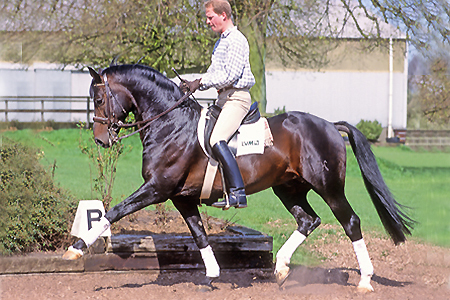
Ingo and Davignon, one of the early stallion stars by Donnerhall, out of a Pik Bube mare
“If you use a Grand Prix stallion, no matter if it’s jumping or dressage, then you can be sure he is tough enough to go through five, eight, nine years of training – which is important – and you know nothing if you use a stallion that is three or four years old.”
For a while there none of the exciting young Dutch stallions like Ampère and Vivaldi, they didn’t go on to Grand Prix, they stalled at Prix St Georges, whereas it looked like the stallions in Germany who went Grand Prix were producing Grand Prix competitors…
“Vivaldi might never have been so successful in the Grand Prix ring, but he is one of the most successful producers for the KWPN with Grand Prix horses, they’ve had lots of Vivaldi offspring on their team spots.”
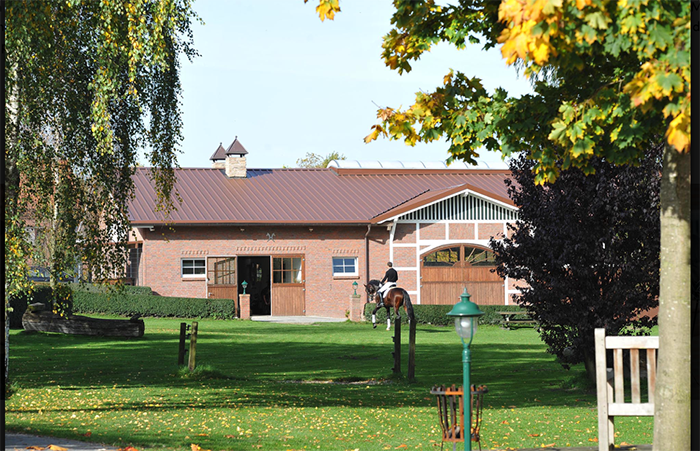
“Speaking from experience, I would have to say it is not easy to have an actively breeding stallion in the show ring, whether it’s Grand Prix or small tour. You can manage them a little through young horse classes, but if you really need 100% concentration, it is not easy. There are super super quality stallions, who are super producers, but they simply can’t handle Grand Prix. And I don’t blame them for that – that’s not character or temperament, it’s just hormones.”
story continues below the advertisement
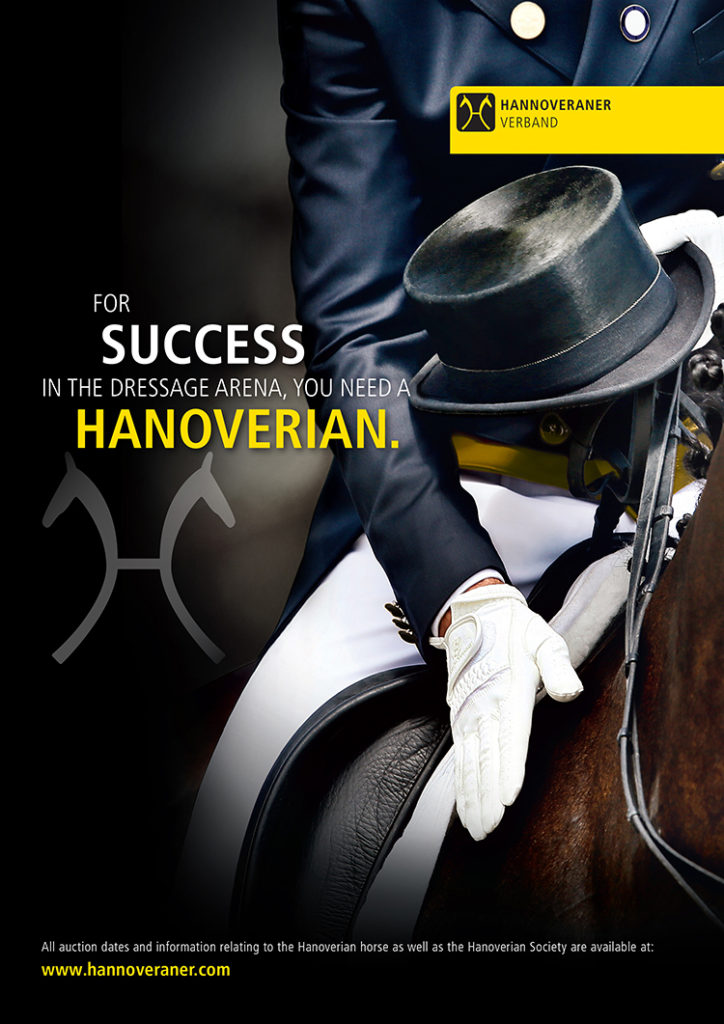
You are a Hanoverian breeder. When I first visited Hanover, 20, 30 years ago, the whole idea was we produce stallions, the Hanoverian breeders believed, we have the best system for selecting stallions and yet, there really hasn’t been a Hanoverian stallion line of any note. If you look at the top 20 stallions in Hanover last breeding season, there’s Dutch, Oldenburg, Westfalien, but not one real Hanoverian line….
“It’s the same in other breeding associations, it’s too international, there is no pure Hanoverian any more because the Hanoverian horse is influenced by so many other breeding associations, so is Oldenburg, so is Westfalia, and so is Holland or Denmark. It’s not a Hanoverian thing, it’s just that horse breeding has got so international.”
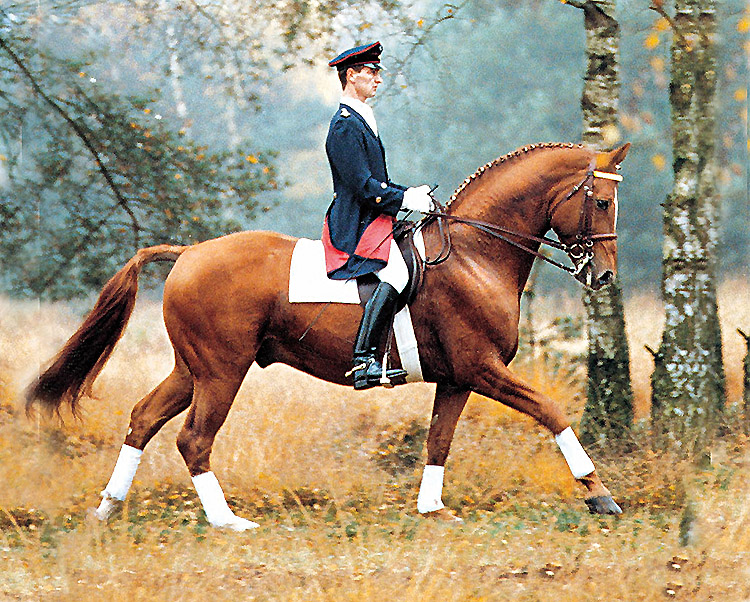
Weltmeyer
So much was put on Weltmeyer, Weltmeyer, Weltmeyer, Weltmeyer, and the refusal to look at the D line from just over in Oldenburg…
“It’s funny that some high ranked stallions produced sons, and other stallions are important through the mare lines. I really like to have Weltmeyer on the mother line, because you have strong top lines, and quick hind legs. I don’t know how many approved sons of Weltmeyer, there were – a lot, but very few that have been influential. But there are others, like the D line, or the Sandro Hit line where they have many sons, grandsons and great grandsons, that are influential, it goes on and on. But it is the same, for example, with Rubinstein. He was so influential for a decade, but the sons, aside from maybe Rubin Royal, there is nothing, no stallion sons.”
“It is different with Donnerhall and Sandro Hit, it’s funny, and don’t ask me why it is like it is.”
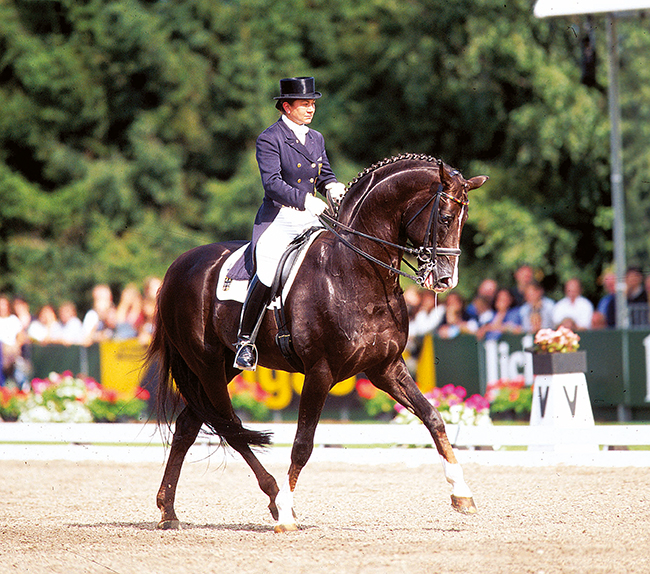
Donnerhall
When you looked at Donnerhall, you could say, oh well he competed Grand Prix, he will be the stallion to produce Grand Prix horses. But you look at Sandro Hit, there’s a lot of Holstein blood, he never stepped into an arena after he was six years old, you might not have predicted that he was going to be the influential stallion, and producer of Grand Prix horses at Games level, that he has become…”
“Horse breeding is funny, there are so many different aspects, so many pieces of a puzzle that make the picture at the end of the day. For sure it is good when a stallion is able to prove it in the ring, but Sandro Hit was extremely busy in the breeding shed, those years, that I can completely understand why they did not compete him.
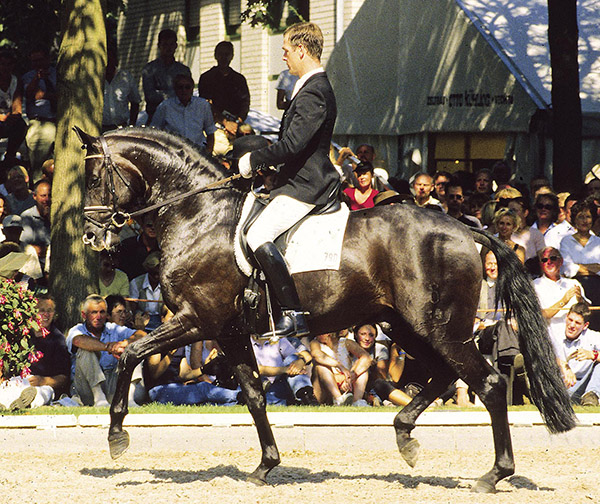
Sandro Hit, “they just did not compete him after six years old…”
We should be fair to these horses, they are not machines, they can’t do everything. It is a very small number that are able to breed big numbers in the breeding shed, and compete at the highest level. It’s wonderful if it happens, but it is not a standard where we should tell our horses, you have to do that – it’s impossible.”
story continues below the advertisement
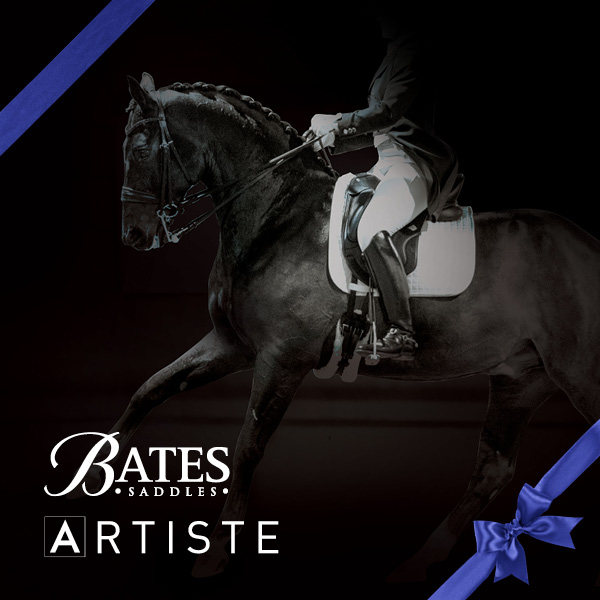
The F line continues to be influential… Furioso II blood flows and flows in dressage…
“And in jumping.”
Did you know the stallion when he was alive?
“Furioso II, sure. Vorwerk’s stallion was a very impressive horse, very impressive. He also bred big numbers, I don’t know if there was a stallion in that decade that bred as many mares as Furioso II at Vorwerks. He was very influential in jumping and dressage, also never touched a Grand Prix ring, that’s genetic. It’s good when they prove it but that’s another piece of the puzzle.”
“I think the difference between the horse for everyone, and the super sport horse, is the collectability, that’s the difference, and you cannot teach that. Or tell, when they are three or four or five years old, how good that talent for the really collected work is.”
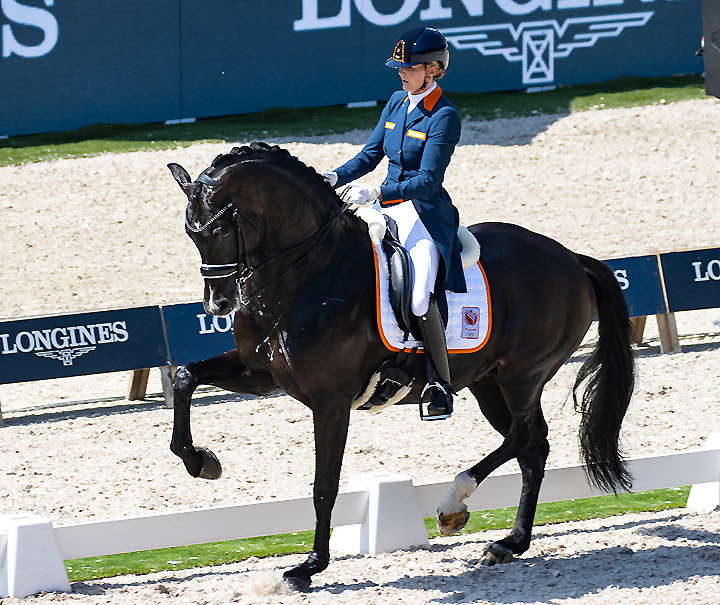
Indian Rock – another stallion in the Dutch dressage team
“If you use a Grand Prix stallion, then you know he is piaffe-ing, he is passage-ing, he’s doing pirouettes, but you have no clue if you use a three year old. That’s, I think, part of the Dutch success, that they’ve really focused for a while on these Grand Prix stallions. They tried to breed for the talent for collection, they had that in their breeding goal – they said, we really want to breed a Grand Prix horse. Which for a while, I think went a little over the line in Holland. In Germany, with our focus on rideability, on suppleness, on relaxation, if we are talking about a horse for everyone, which is a way way bigger market than the market for Grand Prix horses. For a while, the horses from Germany have been easier to sell on the international market. But I think the Dutch people have realised that, they have more focus on relaxation and work, which had got a little bit too far to one side.”
“A Grand Prix is not only piaffe, passage, a Grand Prix is also relaxation and rideability, which every client wants, no matter if he wants to ride through the woods, or in the Grand Prix ring.”
Right now, in your operation, who are the most important stallions for you?
“Important in numbers or what?”
Important in producing the type you are aiming for…
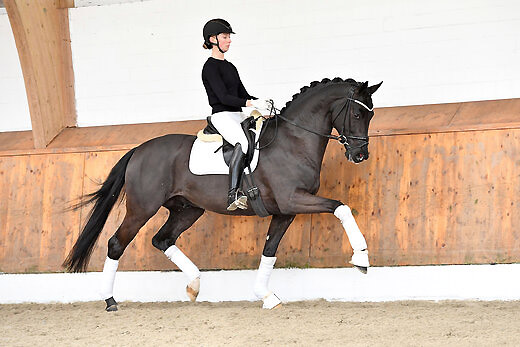
Despacito
“We have this stallion, Despacito (by Don Nobless out of a Sandro Hit / De Niro mare – actually two crosses of De Niro, since Don Nobless is by the De Niro son, Dancier out of a mare by Don Davidoff (Don Gregory / Rubinstein, Volkorn xx) who is coming with his first crop of two year olds in the Fall. His first colts will go to the Licensing, and I am very curious how they will go. We will put the bridle and the surcingle on, and start to ride them next year. I think he can be very influential. I really like what he is producing in the foals, he’s really stamping them, no matter how the mare looks. He’s really giving his type, his swing, and his way of movement. But that’s foals, it has to be proved with horses under saddle. That’s the main thing, we want to breed riding horses, not in-hand horses.”
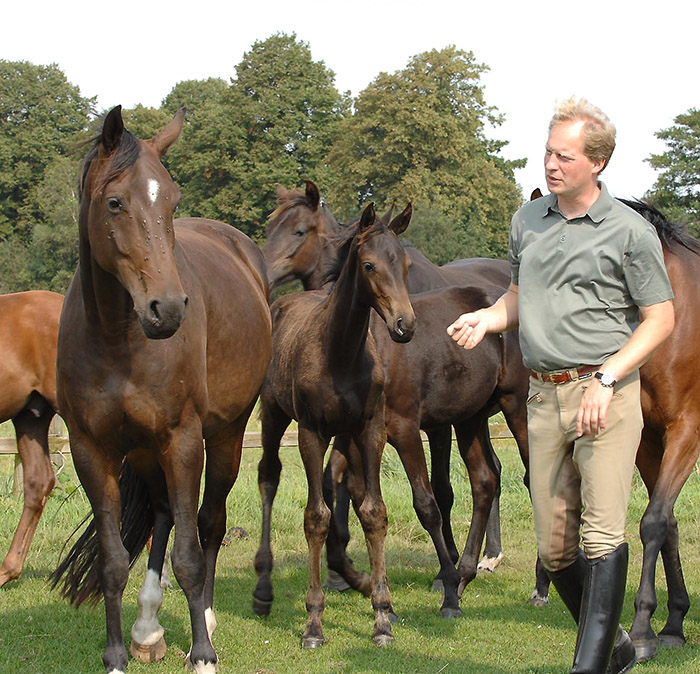
Is it getting harder for stallion owners like yourself to survive?
“Yes, it’s hard for everybody. The market is not easy for breeders, for dealers, for stallion keepers, you have to know what you are doing. I love it, I really like what I am doing and I am very happy with the way the farm and the business has developed over the years, but that does not mean that it is easy.”
What is the next step, the next break-through in dressage breeding, or isn’t there one, do we just keep doing what we are doing?
“I think there is no break-through, we have to focus on building a good foundation, that has maybe gotten a little to the side. The horses have to stay sound and hard enough and tough enough for the sport, and we cannot select that through x-rays, that is totally stupid. That’s another reason why I like breeding with sport stallions.”
“I think one of the important things for the breeders is that they ride their mares, they really know how the mare is under saddle. That they have the most possible info about the mares, then they can better select a fitting stallion for their mares. There’s still too many breeders who don’t ride their mares.”
Were you affected by the WFFS hysterics?
“For a while everybody was affected, but I simply didn’t care. It’s like a wave through the internet, but I never listened. I still breed with the horses I want to, but now, knowing what we do, I wouldn’t cross two positive horses. But it has been there for sure, for so many many years, without us knowing, I simply don’t care. I have all my mares tested, all my stallions tested, and I don’t cross positive horses, that’s all I can do, but really I don’t care.”
Was Donnerhall as carrier?
“I don’t know, could be, but these people who say you shouldn’t breed at all with positive horses, they are so far behind the reality. For example, I have a stallion on my farm, Santos (Secret /Don Schufro / Rohdiamant), and he is an outstanding horse, one of the best horses I’ve ever had, and he is positive, and I think he is positive because his mother/father, Don Schufro was positive, and Don Schufro is an icon of our sport, with his own performance, he was an Olympic horse, and producing for example, Weihegold, the number one horse in the world. And people say, we should not breed with a positive stallion? I don’t think that…”
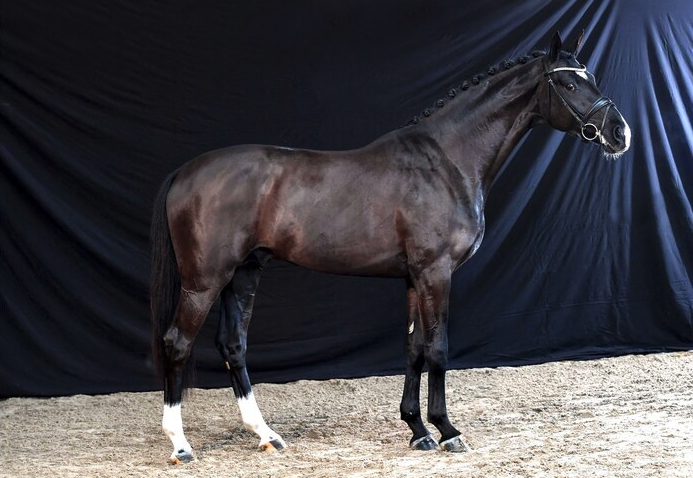
Santos
ends
